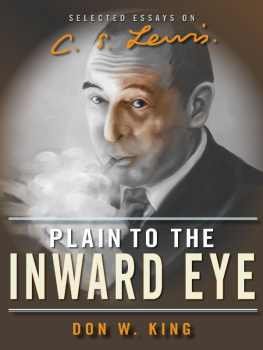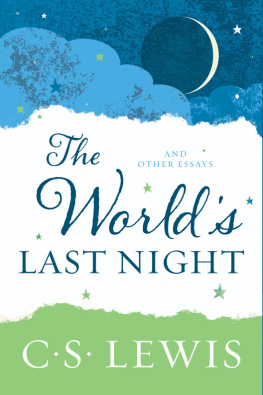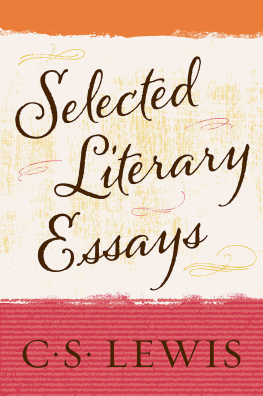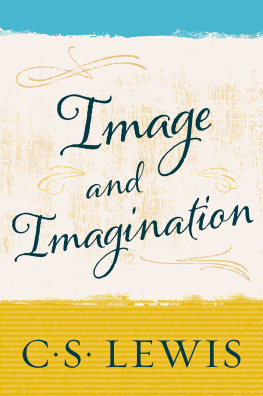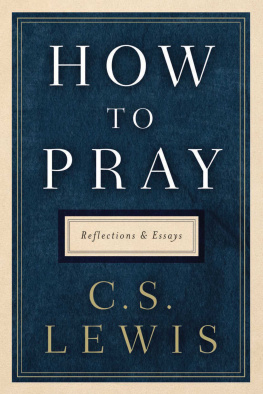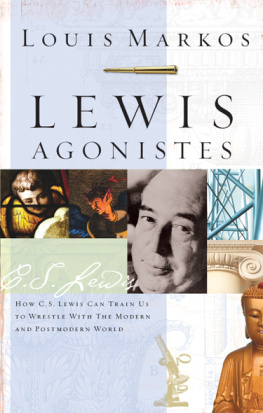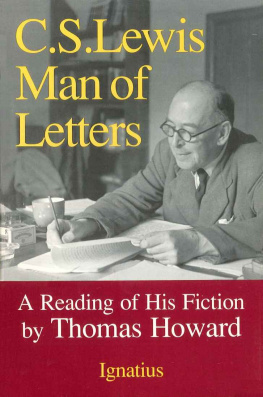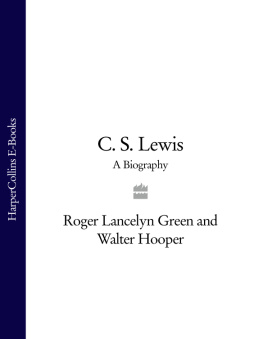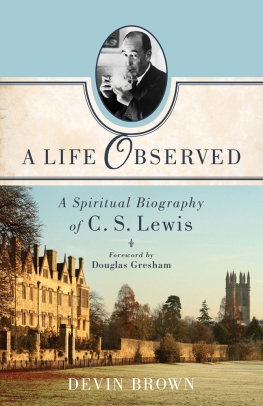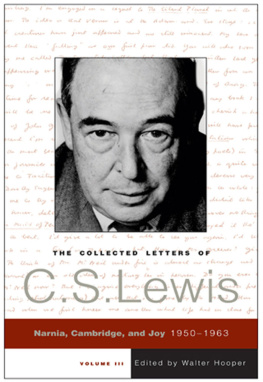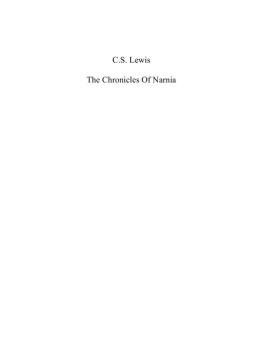Demythologizing C. S. Lewis:
A Review of A. N. Wilsons C. S. Lewis: A Biography
C. S. Lewis as Artist:
A Review of Word and Story in C. S. Lewis
I have many people to thank for helping make this book a reality. First, I thank Leonard Allen and his staff at Abilene Christian University Press. I have received full support and assistance from Leonard and ACUP. I also owe a debt of gratitude to the staff of the Marion E. Wade Center, particularly Laura Schmidt, Heidi Truty, Christopher W. Mitchell, and Marjorie L. Mead who encouraged my research and provided invaluable assistance during my many visits to the Wade Center.
I am grateful to the C. S. Lewis Society of Oxford for inviting me on several occasions to speak on Lewis, Ruth Pitter, and Joy Davidman, and for the helpful criticism and discussion by those in attendance. I thank also the C. S. Lewis Foundation for permitting me to lead two, two-week seminars at the Kilns in the summers of 2004 and 2009 where I floated many of my ideas with those in attendance. Elizabeth Pearson, the library director at Montreat College, and her staff have been endlessly patient and helpful in securing materials, especially Nathan King and Sue Diehl. I owe debts of gratitude to Dan Struble, president of Montreat College, for granting me a sabbatical to work on this book, and the Appalachian College Association for awarding me two summer research grants. Thanks are due as well to Corrie Greene, my research assistant Alyssa Klaus, and Joanna King-Yost who provided the initial ideas for the cover design. Finally, I owe my wife Jeanine a great debt since I spent so many hours away from her while working on this book.
In many of my original essays and reviews I made reference to unpublished sources; since most of those sources have since been published, I have updated the essays and reviews to reflect citations to the now published sources. Essays and reviews appearing in this collection were first published in and are used by the permission of Books & Culture, Christianity and Literature, Christian Scholars Review, The Chronicle of the Oxford C. S. Lewis Society, CSL:Bulletin of the New York C. S. Lewis Society, HIS, The Lamp-Post of the SouthernCalifornia C. S. Lewis Society, Mythlore, Studies in the Literary Imagination, SEVEN: An Anglo-American Literary Review, and World. I cite the original publication information at the beginning of each essay and review.
May I seize this occasion to trot out a hobby-horse and a grievance? Thereis today far too little straightforward interpretative criticism. Everybodyinsists on doing creative criticismwhich means that the critic simplyuses his author as a spring-board from which to leap off into an expositionof his own views about the universe.... There is no doubt a place for thiskind of thing. But I still think we need the pure interpreter, who will sitdown before a poem, or whatever it is, with humility to it and charity to thereader, and begin by finding out and explaining what the author actuallydid say, before he starts to explain what the author ought to have saidand would have said if he had been as enlightened a person as his critic.A friend of mine, after toiling through unintelligible books about modernpoetry, said plaintively, I want a critic who will say: This is a poem abouta bus; this is what the poem says about the bus; this is the conclusion thewriter draws from his observation about the bus; I think he has said it well(beautifully, badly, etc.) for the following reasons. After that he can saywhat he likes, and I shall know where I am. (Letter from Dorothy L. Sayers to C. S. Lewis, Oct. 22, 1948)
When I first read this passage I was struck by how similar Sayers and Lewis were in their perspectives on literary crit icism. Saying essentially the same thing, Lewis put it this way in his poem Spartan Nactus: I am so coarse, the things the poets see / Are obstinately invisible to me... / I am like that odd man Wordsworth knew, to whom / a primrose was a yellow primrose. Lewis model well her admonition that literary critics should sit down before a poem, or whatever it is, with humility to it and charity to the reader, and begin by finding out and explaining what the author actually did say. Plainto the Inward Eye: Selected Essays on C. S. Lewis has been written in that spirit, and while I make no claim to be the equal of either Sayers or Lewis, my own approach to literary criticism, and thus this collection of essays and reviews, follows the same critical perspective.
The genesis for this collection coalesced around the fiftieth anniversary of the death of Lewis and the realization that for the last forty years I have been reading, thinking, and writing about Lewis. Realizing these two facts led me to think it might be time to harvest some of the essays I have written during that time period and bring them together in one volume. These essays arranged more or less chronologicallyconcern four aspects of my writing about Lewis. The first deals mainly with what will perhaps be Lewiss longest lasting legacyhis Chronicles of Narnia. The second focuses upon Lewiss poetry, an area of his work that I believe has been neglected for too long. The third shifts attention to Lewis and the two women poets with whom he had lasting relationships: Ruth Pitter and Joy Davidman. This group of essays is necessarily biographical but not exclusively so; that is, I try to examine the nature of Lewiss relationship with Pitter and Davidman via their poetry, in the process committing what Lewis might call the personal heresy. The fourth gleans some of my reviews and review essays of key books on Lewis, offering a perspective on the ways in which scholarly interest in Lewis has developed over the last thirty years and concluding with a new review essay that covers several of the most important recent books written on Lewis.
A fair question at this point might be why readers should bother with my essays on Lewis. I am, of course, only one among a number of literary scholars who take Lewiss work seriously. An initial reply to this concern is that if longitude is important then I am among a group of less than a dozen Lewis scholars who have kept an eye on Lewis studies for four decades. Longevity, however, is no guarantee of literary acumen. One can offer bad literary criticism over forty years much easier than good literary criticism. So having watched the development of Lewis criticism for a long time is important but that is not enough. A more telling reply is that I have surveyed with a critical eye the way in which Lewiss work has become increasingly popular over this time period. For instance, the Chronicles of Narnia sell over a million copies annually, and since 2005 they have become even more popular because of major film adaptations of the first three Narnian books. During this period I have seen a distinct shift in the nature of Lewis criticism. When I first started writing about Lewis in the early 1980s, most critical writing about him was hagiography, focusing primarily upon Lewis as one who wrote winsomely and effectively about Christianity. Writers saw in Lewis an intellectual who could think, argue, and writebroadly speakingin defense of Christianity.

